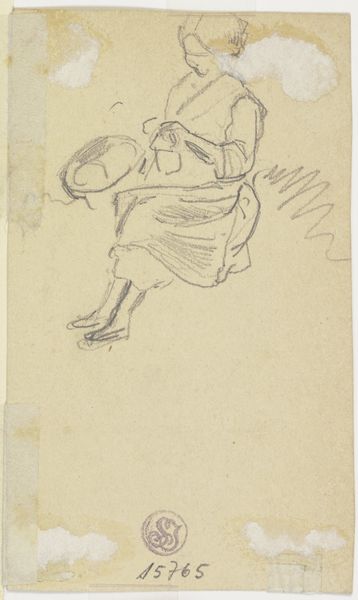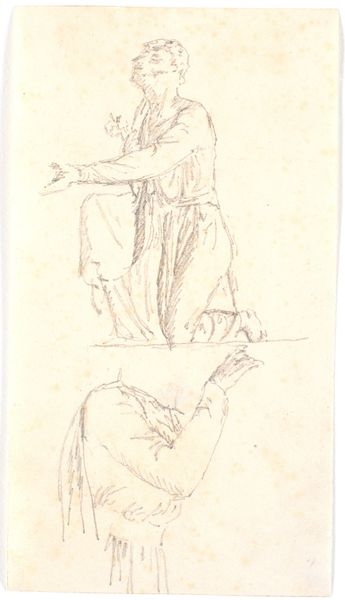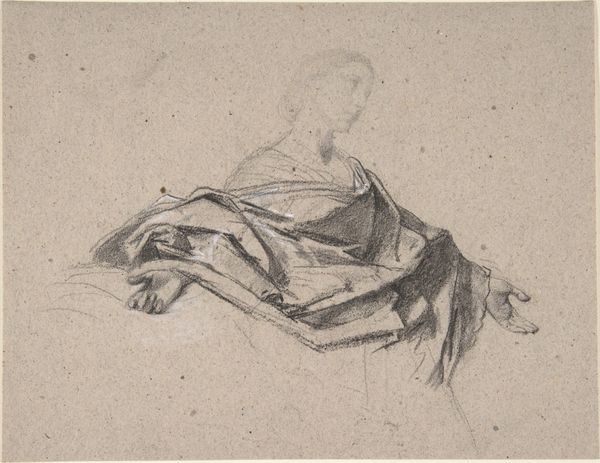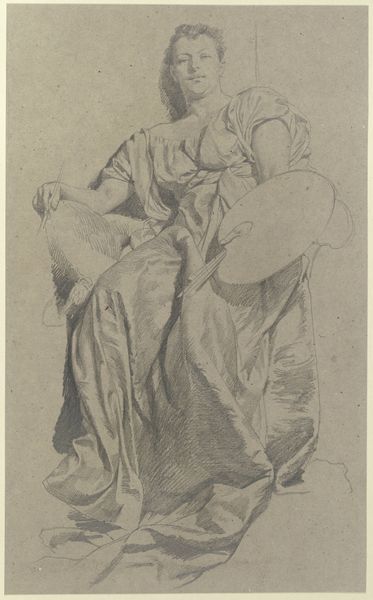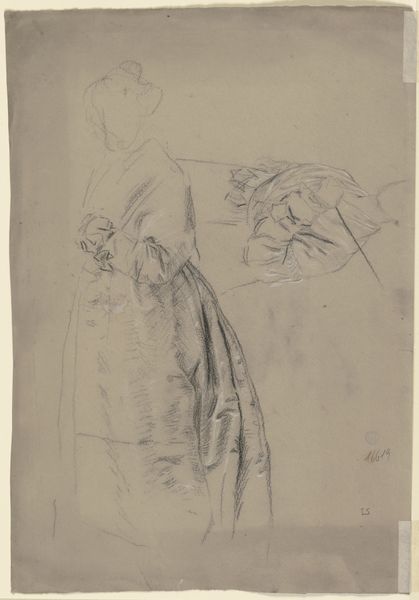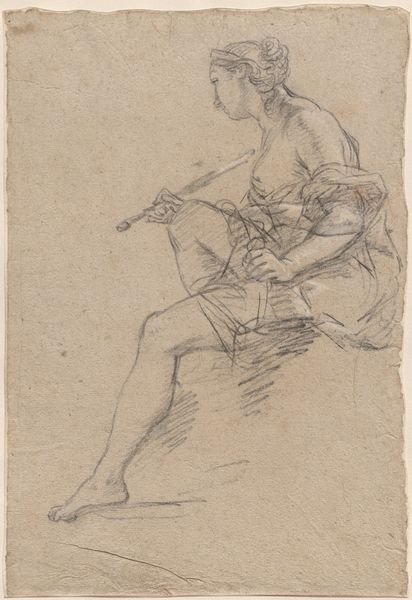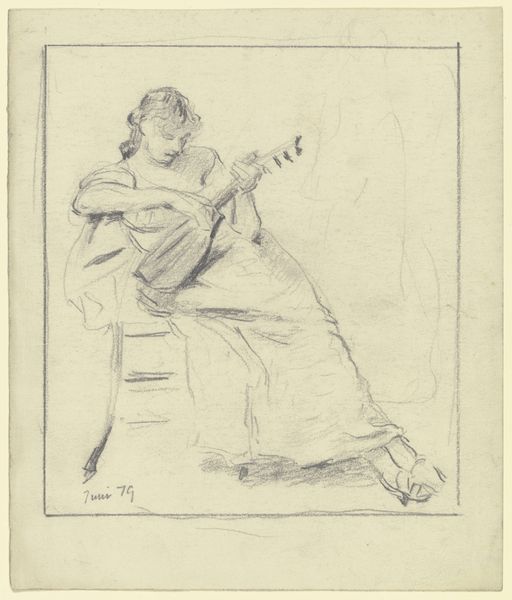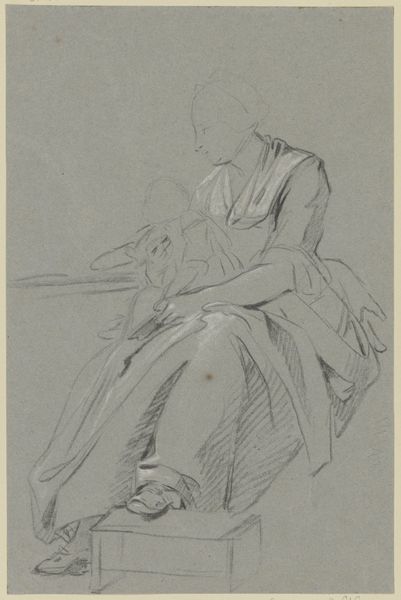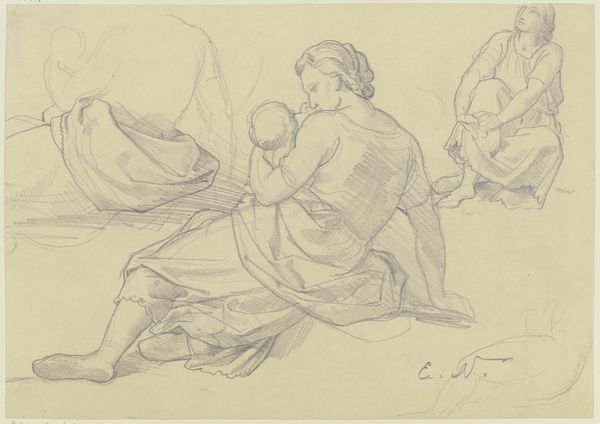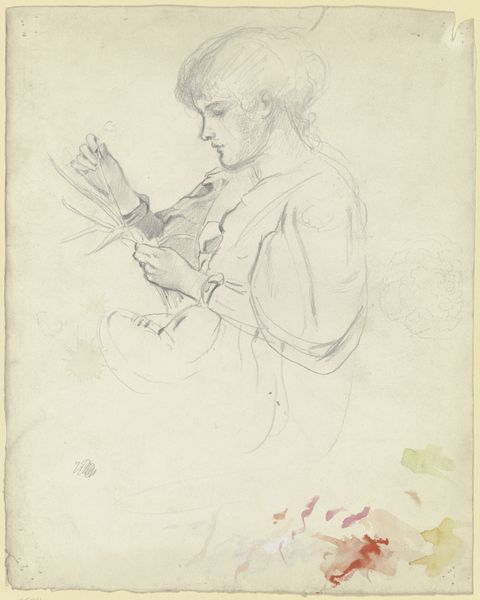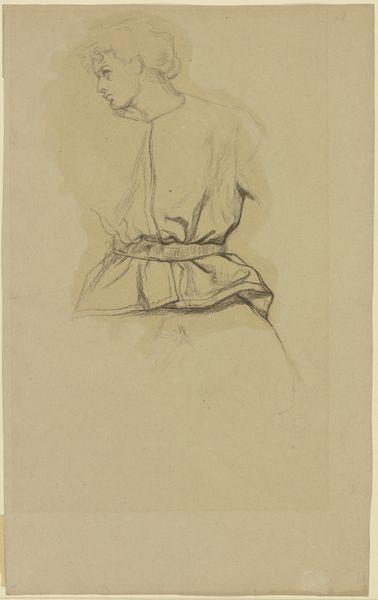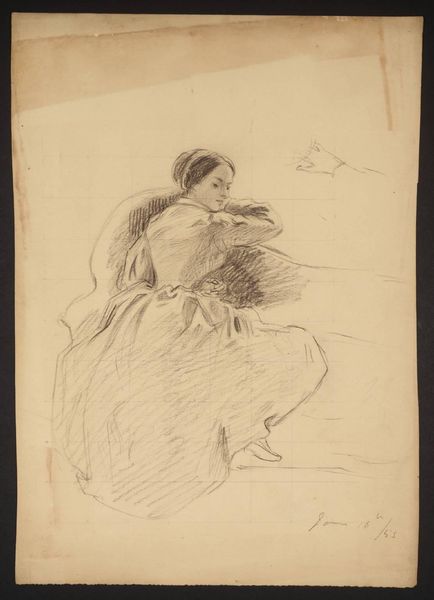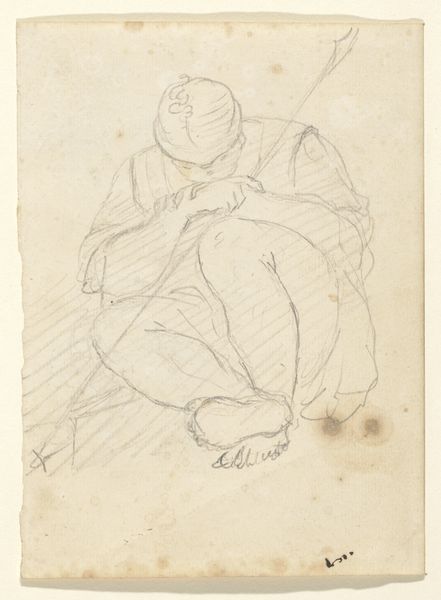
drawing, pencil, chalk
#
portrait
#
drawing
#
pencil
#
chalk
#
genre-painting
Copyright: Public Domain
Curator: Immediately, I'm drawn to its intimacy and quietude. It feels like a fleeting moment captured on paper. Editor: And what exactly are we looking at here? Curator: This is "Woman Playing the Mandolin," a drawing rendered around 1881 by Otto Scholderer. It is housed at the Städel Museum. The artwork utilizes chalk and pencil, it seems, with the strokes loosely but deliberately defining the subject, or, more accurately, subjects. Editor: Subjects, plural? I noticed the more defined figure playing the mandolin, seated front and center, but missed what is occurring at the top. Curator: Indeed. Look again. There is an alternative, or inverted, iteration of the central figure, but more loose in line and posture. What are we to make of that mirroring of image, which speaks to doubling and duality? The two are one and yet they are not. Consider the woman's averted gaze, hinting at an inner world and emotional state removed from our perception, one that may never be knowable but whose symbol is on display. This echoes classical depictions of melancholia, doesn't it? Editor: I see. Now, I find myself pondering the societal context in which a woman's leisure and creative expression—her art making with music—is deemed a worthy subject of visual art. Was the ability to play a musical instrument seen as a marker of status, a refined skill within the constraints placed upon women in the late 19th century? Is the artist playing here with gender and access, in effect granting the mirrored image autonomy beyond status as echo, maybe even giving her room to breathe in ways other women of that time could not? Curator: That reading carries potent symbolism in light of your activist view on visuality. Editor: Visual artifacts are, at their best, springboards for further understanding; and this, to my view, has far less to do with aesthetic beauty than with its possible intervention into visual fields marked by privilege. What does the fact of art say about the woman portrayed? Does that inverted, or doubled, version speak to potential, repressed selfhood, freedom of being denied to her due to her assigned role within bourgeois structures? Curator: Fascinating points. This makes me reconsider the almost spectral quality of the sketch. Perhaps what at first reads as the comfort of interiority becomes a haunting. Editor: A haunting of lost potential, of muted voices. This is far more intricate than a simple portrait of a musician; instead it embodies social limitations alongside gestures towards an elusive but tenacious autonomy.
Comments
No comments
Be the first to comment and join the conversation on the ultimate creative platform.
